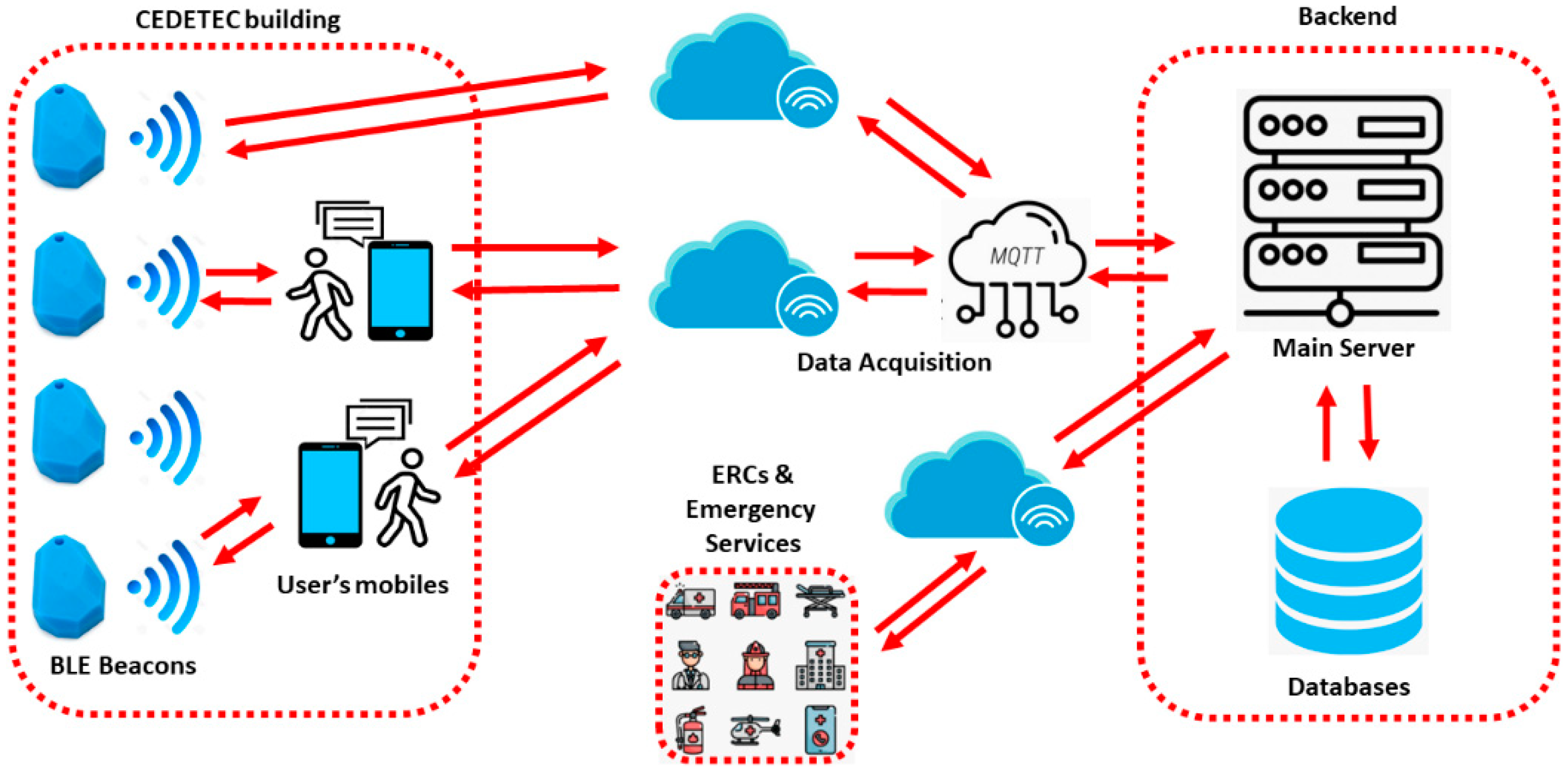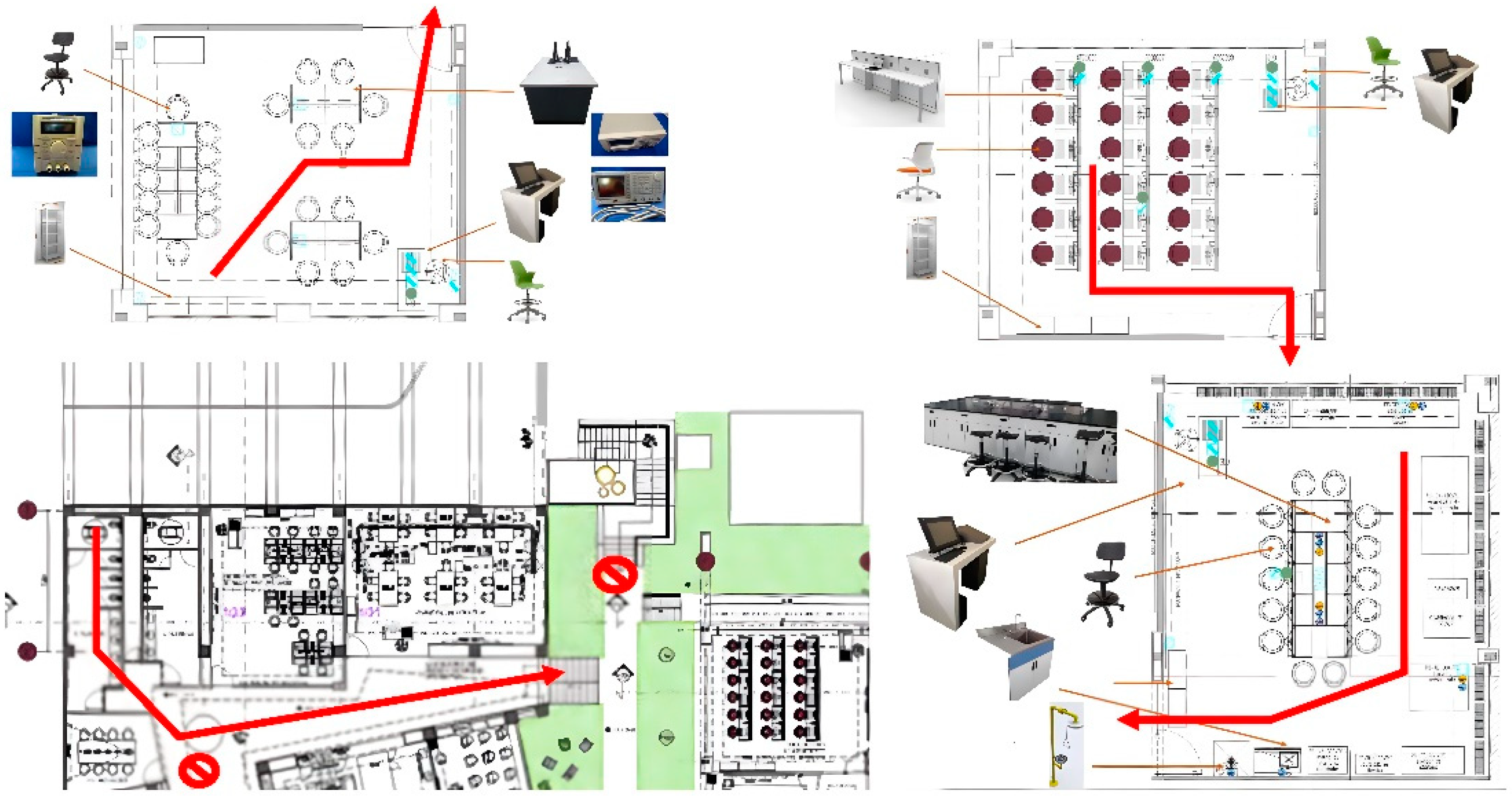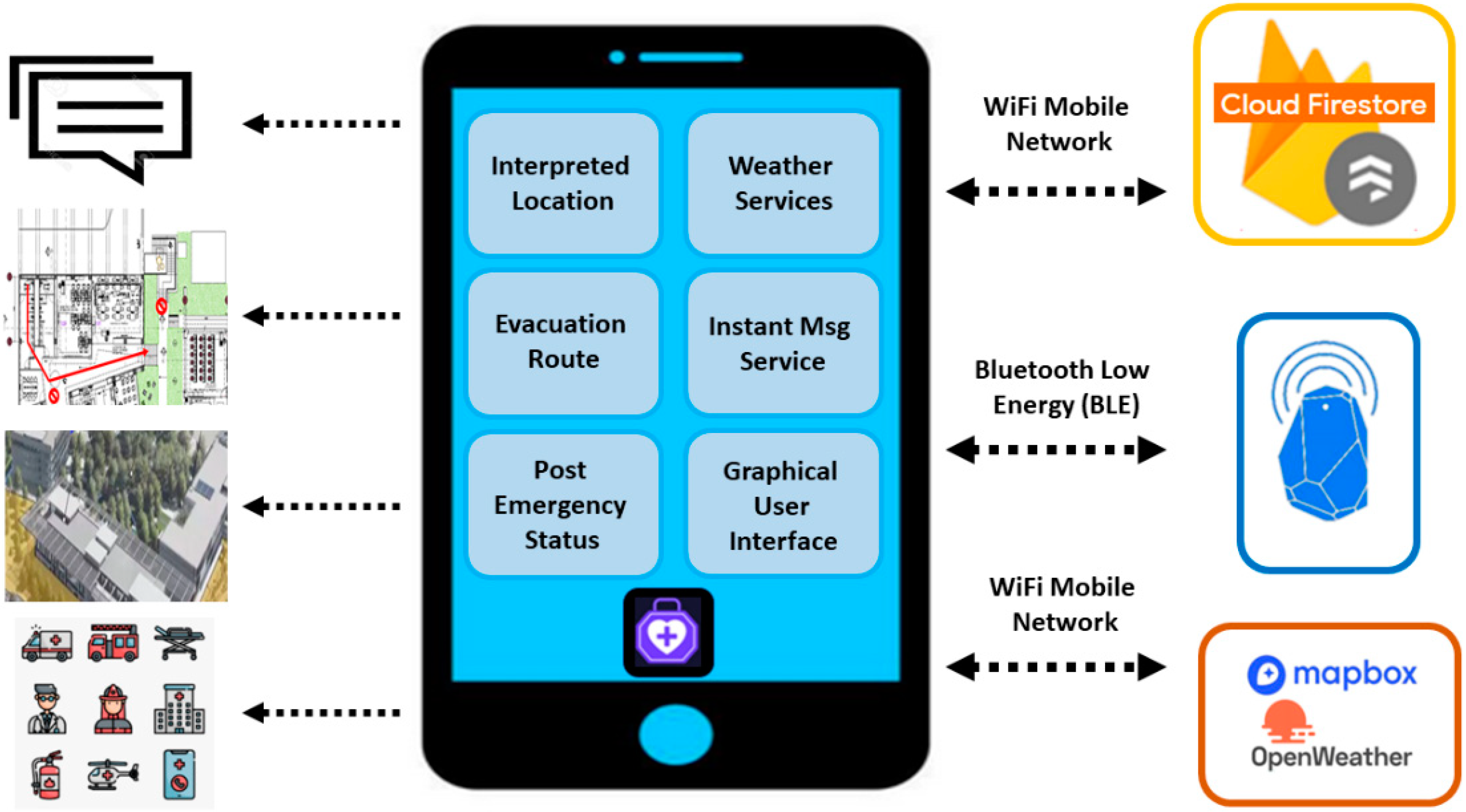You're using an outdated browser. Please upgrade to a modern browser for the best experience.

Submitted Successfully!
Thank you for your contribution! You can also upload a video entry or images related to this topic.
For video creation, please contact our Academic Video Service.
| Version | Summary | Created by | Modification | Content Size | Created at | Operation |
|---|---|---|---|---|---|---|
| 1 | Jorge Membrillo-Hernández | -- | 2135 | 2022-05-02 05:18:04 | | | |
| 2 | Camila Xu | Meta information modification | 2135 | 2022-05-05 08:28:56 | | |
Video Upload Options
We provide professional Academic Video Service to translate complex research into visually appealing presentations. Would you like to try it?
Cite
If you have any further questions, please contact Encyclopedia Editorial Office.
Membrillo-Hernández, J.; Lopez-Caudana, E.; Ruiz-Loza, S.; Calixto, A.; Nájera, B.; , .; Romero Aguilar, D.; Vargas, V.; Lara-Prieto, V.; Caratozzolo, P. TECuidamos. Encyclopedia. Available online: https://encyclopedia.pub/entry/22564 (accessed on 24 December 2025).
Membrillo-Hernández J, Lopez-Caudana E, Ruiz-Loza S, Calixto A, Nájera B, , et al. TECuidamos. Encyclopedia. Available at: https://encyclopedia.pub/entry/22564. Accessed December 24, 2025.
Membrillo-Hernández, Jorge, Edgar Lopez-Caudana, Sergio Ruiz-Loza, Aarón Calixto, Brandon Nájera, , Diego Romero Aguilar, Vincent Vargas, Vianney Lara-Prieto, Patricia Caratozzolo. "TECuidamos" Encyclopedia, https://encyclopedia.pub/entry/22564 (accessed December 24, 2025).
Membrillo-Hernández, J., Lopez-Caudana, E., Ruiz-Loza, S., Calixto, A., Nájera, B., , ., Romero Aguilar, D., Vargas, V., Lara-Prieto, V., & Caratozzolo, P. (2022, May 02). TECuidamos. In Encyclopedia. https://encyclopedia.pub/entry/22564
Membrillo-Hernández, Jorge, et al. "TECuidamos." Encyclopedia. Web. 02 May, 2022.
Copy Citation
TECuidamos has four main modules: Data Acquisition, Wireless Transmission Network, Cloud Server, and User Access.
disasters
evacuation system
higher education
educational innovation
Challenge-Based Learning (CBL)
1. Introduction
The high frequency of earthquakes in Mexico City is due to the fact that the country is located on the limit of the North American plate, which creates a subduction zone with the Cocos plate in the Pacific Ocean. It is also part of the Pacific Ring of Fire and forms spreading zones at the boundaries of the North American and Pacific plates [1]. In the last 50 years, two earthquakes have marked Mexican society, both with devastating material consequences, in 1985 and 2017, both on 19 September, in a gloomy way. The earthquakes were of a similar magnitude (8.1 on the Richter scale). However, the number of deaths was diametrically different; in 1985 it was estimated at around 50,000 deaths, while in 2017, it was only 370 [2]. This is because the way humans react and prepare for an emergency is no longer the same. Education on civil protection is part of cross-cutting and civic education at all levels of education in Mexico City. This education consists of having training sessions on evacuation in the event of an earthquake, use of evacuation nomenclature, identification of risk areas and safe areas, meeting points, and formation of committees in charge of some particular action for the correct response to large-scale events. In fact, progress in the Information and Communication Technologies (ICT) have produced multiple tools, such as a communication system for a seismic alert system located on the Pacific coast that sounds at least 30–45 s before the seismic wave reaches Mexico City. Other examples of relevant tools during the 2017 earthquake were the use of the WhatsApp instant messaging platform or the city evacuation systems [3][4].
In emergency situations, it is essential to have adequate alternatives to evacuate people in real or potential danger. Taking this context into account, the question that arises is: how can researchers address social problems through higher education? Since 2015, the Tecnologico de Monterrey has been implementing the Tec21 educational model, which is based on four fundamental pillars:
-
Inspiring Faculty
-
A comprehensive and memorable students experience
-
Flexibility in when and where the learning experience takes place and
-
Challenge-Based Learning (CBL) didactic technique for students’ competencies development.
CBL is an educational technique that engages students in current, relevant, and real-world problems so that they can propose solutions working in multidisciplinary teams, managing uncertainty, and with the focus on competency development [5]. The focus is on how the students tackle the challenge and the process they follow to apply their knowledge and skills, research and learn new information, and propose possible solutions to the assigned problem. This process is part of the immersive learning experience and matters more than the proposed solution itself. CBL has been applied in K-12 education combined with the engineering design process to foster students’ creativity and entrepreneurship skills [6]. Teachers have integrated engineering and CBL into their instruction for the development of decision-making competency [7].
Tecnologico de Monterrey has had a very active role implementing CBL in its undergraduate programs. Some examples of relevant CBL experiences implementation at the university include challenges with Mechatronics and Biotechnology Engineering students, and the impact of digital technology tools on the competence development; this research suggests the use of checklists and clear rubrics for an objective and transparent evaluation process in CBL courses [8]. A key element within the CBL experience is the educational partner, which is an entity, company, or organization from the manufacturing or service sector, civil society, or community groups, with which Tecnologico de Monterrey has built a connection for long-term collaboration and opens their doors to propose real and relevant problems to immerse students and professors in a real context, with its advantages and constraints. A successful example of this collaboration involves an automotive company and students from the Computer Science, Business and Technology, Digital Systems, and Mechatronics engineering programs to propose solutions to innovative challenges on the digital transformation journey of the company [9]. As faculty, evaluating competencies development is a challenge by itself. Studies have shown that having adequate evaluation instruments, for instance, checklists and rubrics, promote an objective and fair assessment [10]. When presenting the challenge to the students, it becomes relevant to clearly state the competencies to be evaluated and the performance indicators, as well as the corresponding diagnostic, formative, and summative assessment instruments that would be used during the CBL experience [5].
Moved by the painful experiences lived at Mexico City Campus during the 2017 earthquake when a pedestrian bridge between two buildings collapsed, killing 5 students and injuring 30 others, a challenge was established to create a device that could help in the event of a disaster. Students and faculty from the Telecommunications and Electronic Systems engineering program at the university were involved in the challenge. The educational partner was the emergency response coordinators (ERCs) from the university since the device should consider the specific requirements of the campus to be integrated within the existing evacuation protocols. This proposal was designed in terms of developing a system that represents both a technology-based tool to improve evacuation times and a tool for measuring certain academic skills in the participants involved to encourage them in the development process, such as the resolution of real problems, integration of state-of-the-art technology, and social impact according to the Tec21 educational model.
2. Background Information
Earthquakes happen unexpectedly (there is no way to predict them) and can be catastrophic in terms of material and human losses. Although this type of natural disaster cannot be avoided, it is essential to be prepared to minimize casualties and injury to people. Preparation for emergency evacuations in medium- to large-scale corporations with high-density buildings and hundreds of students, teachers, and administrative staff, must be performed according to emergency preparedness plans with evacuation procedures by conducting regular drills.
Educational institutions generally have teams of volunteer employees who are formally trained in disaster management procedures and are called emergency response coordinators (ERCs) [11]. Generally, these teams ensure that, in the event of a disaster, at least one ERC provides coverage in each building and on each floor. The ERCs oversee protocols that broadly consists of several tasks: The first task of an ERC is to direct people to calmly leave the building and meet at a predetermined meeting point far enough from the building. Second, ERCs also ensure that the disaster is reported to the appropriate ER or emergency services as soon as possible. The third task, once at the assembly point, is the process called reconciliation, which means accounting for all the people who were in the building before the disaster [12]. To carry out reconciliation, the ERCs must have the real-time updated attendance list on hand and bring it with them to the meeting point. Using the attendance list and the list of reconciled people prepared at the meeting point, they can produce a list of people who are still not accounted for: these persons are the ones who are supposedly trapped in the building.
How many people were in the building? The process of accounting for all the people at the meeting point is still a manual task in most cases and, therefore, error prone; even a small number of false negatives (the person erroneously counted as not trapped) can be dangerous to trapped people, and too many false positives (too many people mistakenly reported as trapped) can mean losing valuable response time. In the case of earthquakes, another problem is that centralized electronic assistance systems can go offline or become inaccessible, forcing rescuers to search from room to room. Finally, in the case of evacuations on university campuses with many buildings, multiple assembly points, multiple ERCs, and multiple exit points are also involved. The concatenation of the exposed problems results in the need to develop more complex and reliable assistance strategies.
3. System Architecture of TECuidamos
TECuidamos has four main modules: Data Acquisition, Wireless Transmission Network, Cloud Server, and User Access, as shown in Figure 1.

Figure 1. TECuidamos system architecture (See text for explanation).
Data Acquisition module. This is primarily responsible for collecting location information and personal information (name and email) through the smartphones of people who enter the CEDETEC building.
Wireless Transmission Network module. This allows bidirectional communications between smartphones and the Cloud Server and is based on Bluetooth Low Energy (BLE) devices known as beacons. As shown in Figure 2, these beacons were installed at certain points of interest in rooms, corridors, and stairs to know the updated location of people inside the building, the number of users per location, the number or evacuees, so that the ERC authorities are always aware of how many people are in each spot, before and after evacuation.

Figure 2. The BLE devices (red dots) were located at several locations of the rooms of the CEDETEC buildings.
Cloud Server module. This receives the data from the Data Acquisition module and provides data storage and processing services. The main tasks of the cloud services module are to manage the information of the trapped people, and through a route planning algorithm, considering the degree of risk and the weights of influencing factors, as mentioned in the previous section, determine the safest evacuation path and the spots that can serve as temporary shelter.
User Access module. This is used as an interactive interface for people to obtain the evacuation services of the Cloud Server module, including the browser-based access interface for ERCs and the visualized evacuation planning for the smartphones.
Figure 3 shows some plans of laboratories, with the type of furniture, location of the instruments, number of chairs and tables, and other data necessary to know the situation of the people trapped near each beacon. It is very important to know the exact structural characteristics, the exact location, and the amount of furniture and appliances in each room of the building for the calculation of the level of safety variables: Crowding, Obstructions, Vulnerability, Danger, and Visibility [4], which determine the changing real-time display of the safe exit routes and the corridors/exits that should be avoided due to the risk of collapse or blockage. The safety variables considered and their levels were the following:

Figure 3. Laboratories, furniture, and real-time display of a safe exit path indicated by red arrows, the “canceled circules” means that the exit is blocked or closed.
Crowding is related to the influence of human densities on respective escaping velocities within each classroom and laboratory of the network. The danger level can vary from pedestrian space >3.7 m2/p (with sufficient area to bypass other pedestrians and avoid crossing conflicts), to pedestrian space <0.75 m2/p (where walking speeds are severely restricted).
Obstructions are related to the possible presence of debris (from damaged walls and ceilings) along the corridors. The danger level can vary from corridors/exits without blocked sections to corridors/exits with almost one blocked section.
Vulnerability is related with the tendency of built elements along the escape path (e.g., floating staircases, monuments, glass walls, large metal shelves, and pedestrian bridges) to suffer earthquake-induced damages. The danger level can vary from Low to High.
Danger is related to effects due to fires, toxic smoke or dust, and explosions provoked by flammable liquids stored in chemical laboratories, transformer oil leaks in electrical cabinets, broken gas pipes in kitchens, etc. The danger level can vary from no threat along the corridors/exits, to mortal threat in the case of the presence of toxic smoke, widespread fires, and toxic substances leaks.
Visibility affects the individuals’ perception of the surrounding environment and can provoke a deceleration of a pedestrian’s escaping motion. The danger level can vary from absence of visibility interferences to presence of dense smoke, thick dust, and even a total blackout situation.
5. Mobile Application Tool
The main challenge of the CBL strategy was to integrate multiple ICT tools in a mobile application, which aims to provide personalized assistance for the location, evacuation, and help of people in an emergency. The TECuidamos application was made up of the following operating modules:
Interpreted location. The user’s location within the building is shown according to parameters established within the application and with the help of Bluetooth Low Energy (BLE) devices.
Evacuation Route. Once the emergency signal is activated, the user will be shown the ideal evacuation route for them, according to certain parameters contemplated in an algorithm.
Weather Services. Current weather and forecasts are displayed based on the user’s location.
Instant Messaging Service. Platform through which users can communicate internally, having the possibility of communicating relevant information to the community.
User survey. Tool that allows users to communicate their post-emergency status.
Figure 4 shows an overview of the mobile app’s block diagram that summarizes the features that are included in the App and the other technologies that work together to provide the information needed for the feature to work well.

Figure 4. Block diagram of the mobile App.
References
- Singh, S.K.; Reinoso, E.; Arroyo, D.; Ordaz, M.; Cruz-Atienza, V.; Pérez-Campos, X.; Iglesias, A.; Hjörleifsdóttir, V. Deadly Intraslab Mexico Earthquake of 19 September 2017 (M w 7.1): Ground Motion and Damage Pattern in Mexico City. Seismol. Res. Lett. 2018, 89, 2193–2203.
- Galvis, F.; Miranda, E.; Heresi, P.; Dávalos, H.; Silos, J.R. Preliminary Statistics of Collapsed Buildings in Mexico City in the September 19, 2017 Puebla-Morelos Earthquake; John, A., Ed.; Blume Earthquake Engineering Center and Department of Civil and Environmental Engineering Stanford University: Stanford, CA, USA, 2017.
- Amiresmaili, M.; Zolala, F.; Nekoei-Moghadam, M.; Salavatian, S.; Chashmyazdan, M.; Soltani, A. Role of Social Media in Earthquake: A Systematic Review. Iran. Red Crescent Med. J. 2021, 23, e477.
- Bernardini, G.; Santarelli, S.; Quagliarini, E.; D’orazio, M. Dynamic Guidance Tool for a Safer Earthquake Pedestrian Evacuation in Urban Systems. Comput. Environ. Urban Syst. 2017, 65, 150–161.
- Caratozzolo, P.; Membrillo-Hernández, J. Evaluation of Challenge Based Learning Experiences in Engineering Programs: The Case of the Tecnologico de Monterrey, Mexico. In Proceedings of the Visions and Concepts for Education 4.0, McMAster University, Hamilton, ON, Canada, 14–16 October 2020; Auer, M.E., Centea, D., Eds.; Springer International Publishing: Cham, Switzerland, 2021; pp. 419–428.
- Kukreti, A.R.; Broering, J. An Entrepreneurship Venture for Training K-12 Teachers to Use Engineering as a Context for Learning. Educ. Sci. 2019, 9, 54.
- Meyer, H. Teachers’ Thoughts on Student Decision Making During Engineering Design Lessons. Educ. Sci. 2018, 8, 9.
- Membrillo-Hernández, J.; de Jesús Ramírez-Cadena, M.; Ramírez-Medrano, A.; García-Castelán, R.M.G.; García-García, R. Implementation of the Challenge-Based Learning Approach in Academic Engineering Programs. Int. J. Interact. Des. Manuf. 2021, 15, 287–298.
- Lara-Prieto, V.; Flores-Garza, G.E. IWeek Experience: The Innovation Challenges of Digital Transformation in Industry. Int. J. Interact. Des. Manuf. 2022, 16, 81–98.
- Membrillo-Hernández, J.; García-García, R. Challenge-Based Learning (CBL) in Engineering: Which Evaluation Instruments Are Best Suited to Evaluate CBL Experiences? In Proceedings of the 2020 IEEE Global Engineering Education Conference (EDUCON), Porto, Portugal, 27–30 April 2020; pp. 885–893.
- Tipler, K.; Tarrant, R.; Tuffin, K.; Johnston, D. Learning from Experience: Emergency Response in Schools. Nat. Hazards 2018, 90, 1237–1257.
- Annadata, P.; Eltarjaman, W.; Thurimella, R. Person Detection Techniques for an IoT Based Emergency Evacuation Assistance System. In Proceedings of the 13th International Conference on Mobile and Ubiquitous Systems: Computing Networking and Services, Hiroshima, Japan, 28 November–1 December 2016; Association for Computing Machinery: New York, NY, USA, 2016; pp. 77–82.
More
Information
Subjects:
Education, Scientific Disciplines
Contributors
MDPI registered users' name will be linked to their SciProfiles pages. To register with us, please refer to https://encyclopedia.pub/register
:
View Times:
970
Entry Collection:
Remote Sensing Data Fusion
Revisions:
2 times
(View History)
Update Date:
05 May 2022
Notice
You are not a member of the advisory board for this topic. If you want to update advisory board member profile, please contact office@encyclopedia.pub.
OK
Confirm
Only members of the Encyclopedia advisory board for this topic are allowed to note entries. Would you like to become an advisory board member of the Encyclopedia?
Yes
No
${ textCharacter }/${ maxCharacter }
Submit
Cancel
Back
Comments
${ item }
|
More
No more~
There is no comment~
${ textCharacter }/${ maxCharacter }
Submit
Cancel
${ selectedItem.replyTextCharacter }/${ selectedItem.replyMaxCharacter }
Submit
Cancel
Confirm
Are you sure to Delete?
Yes
No




